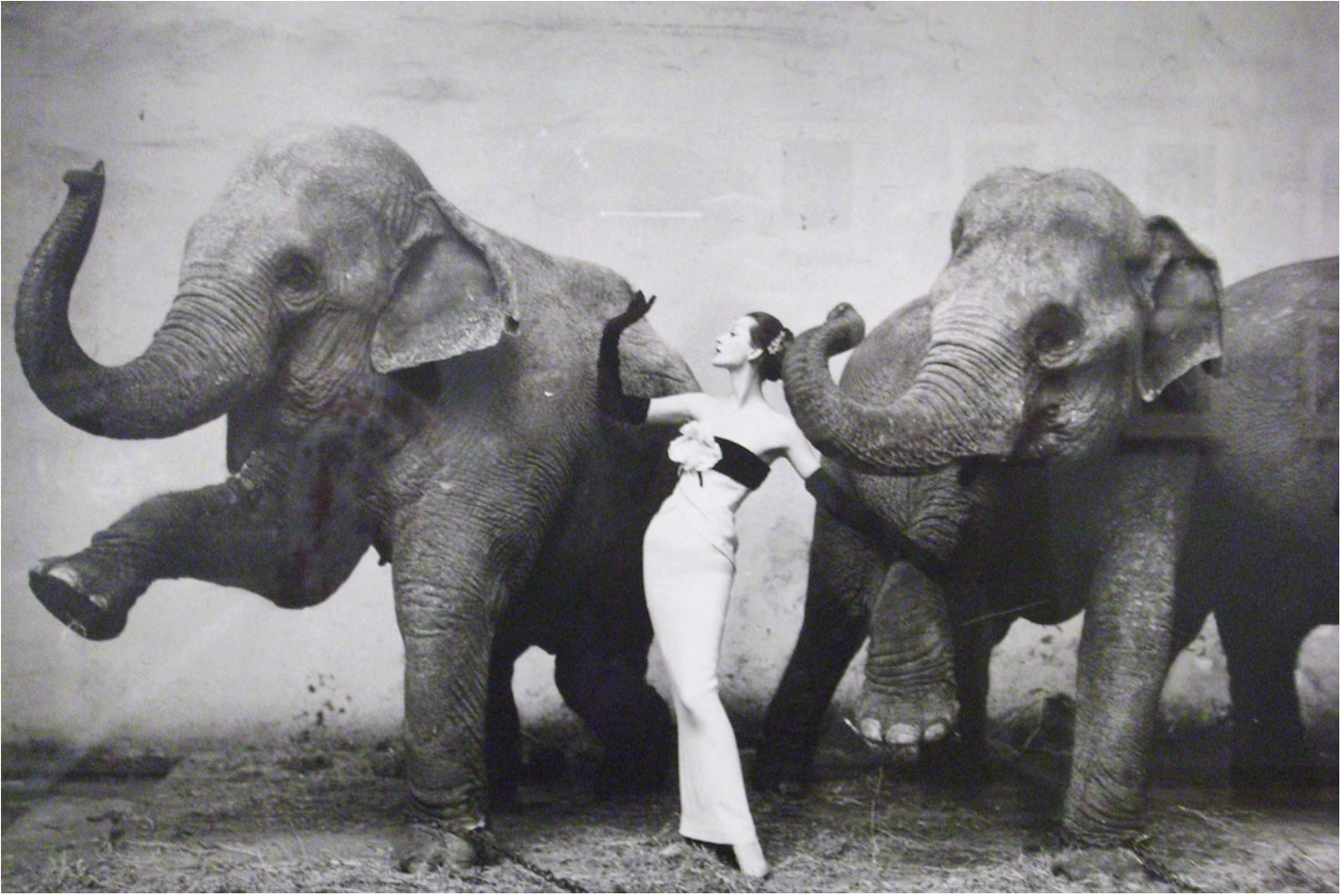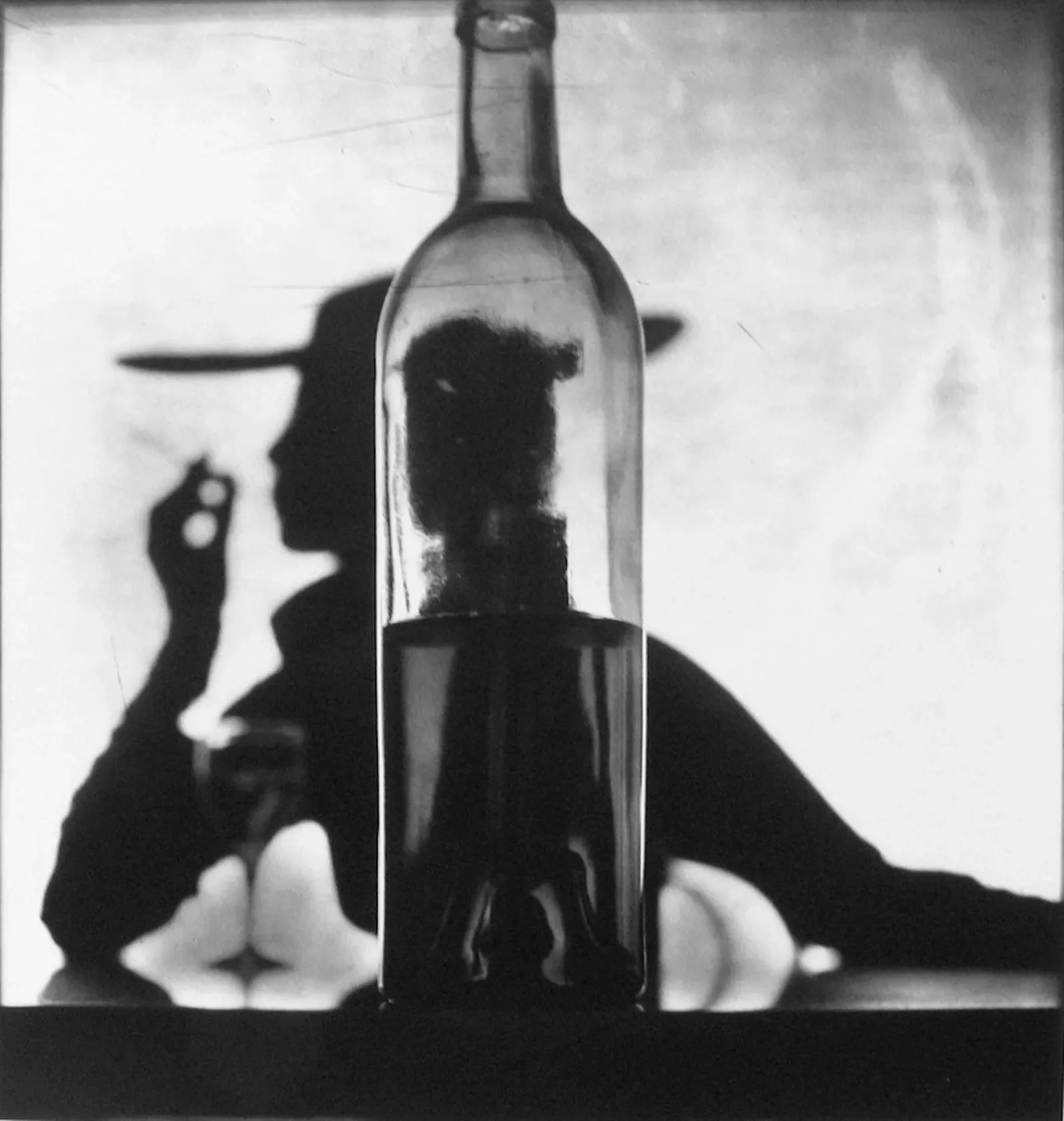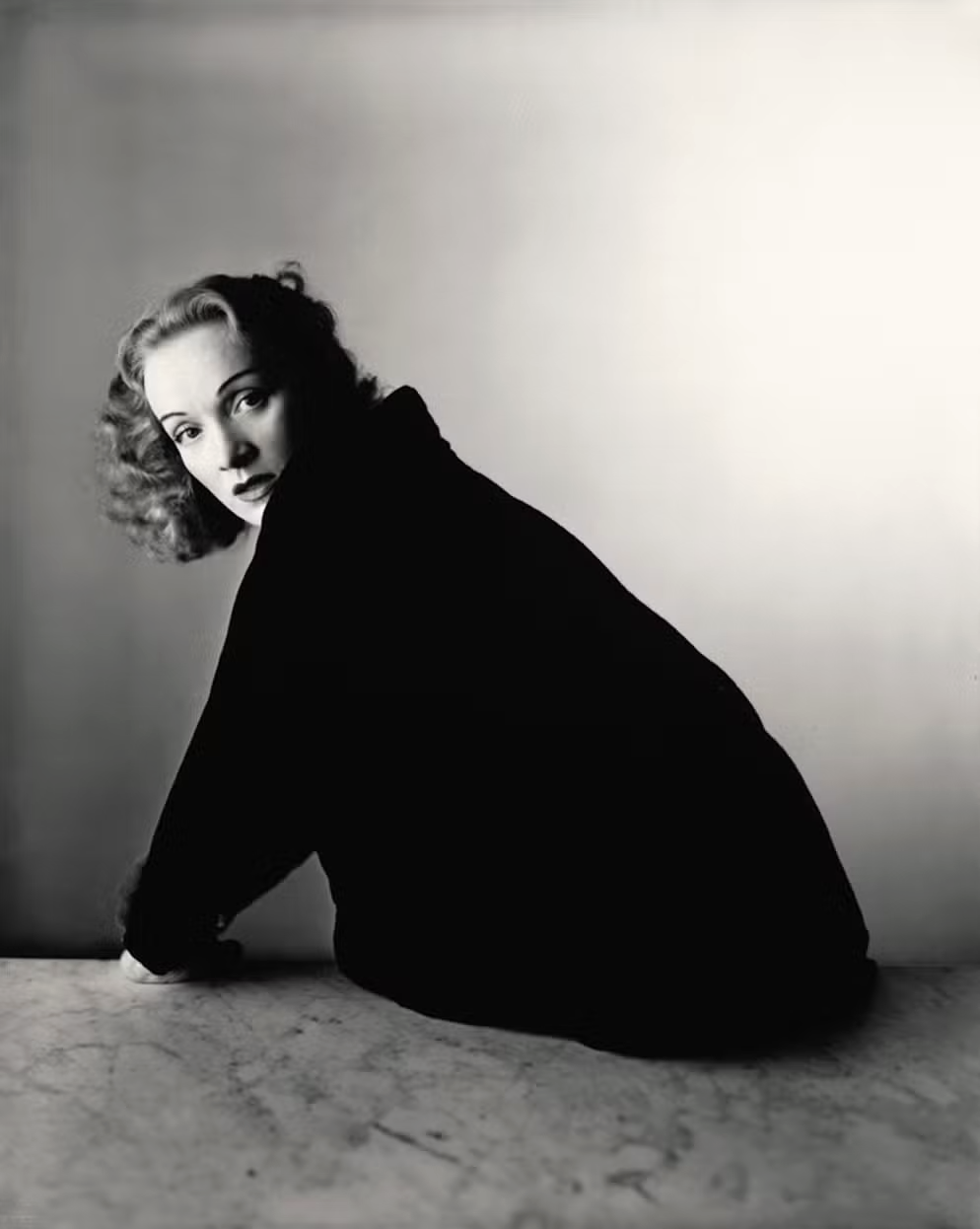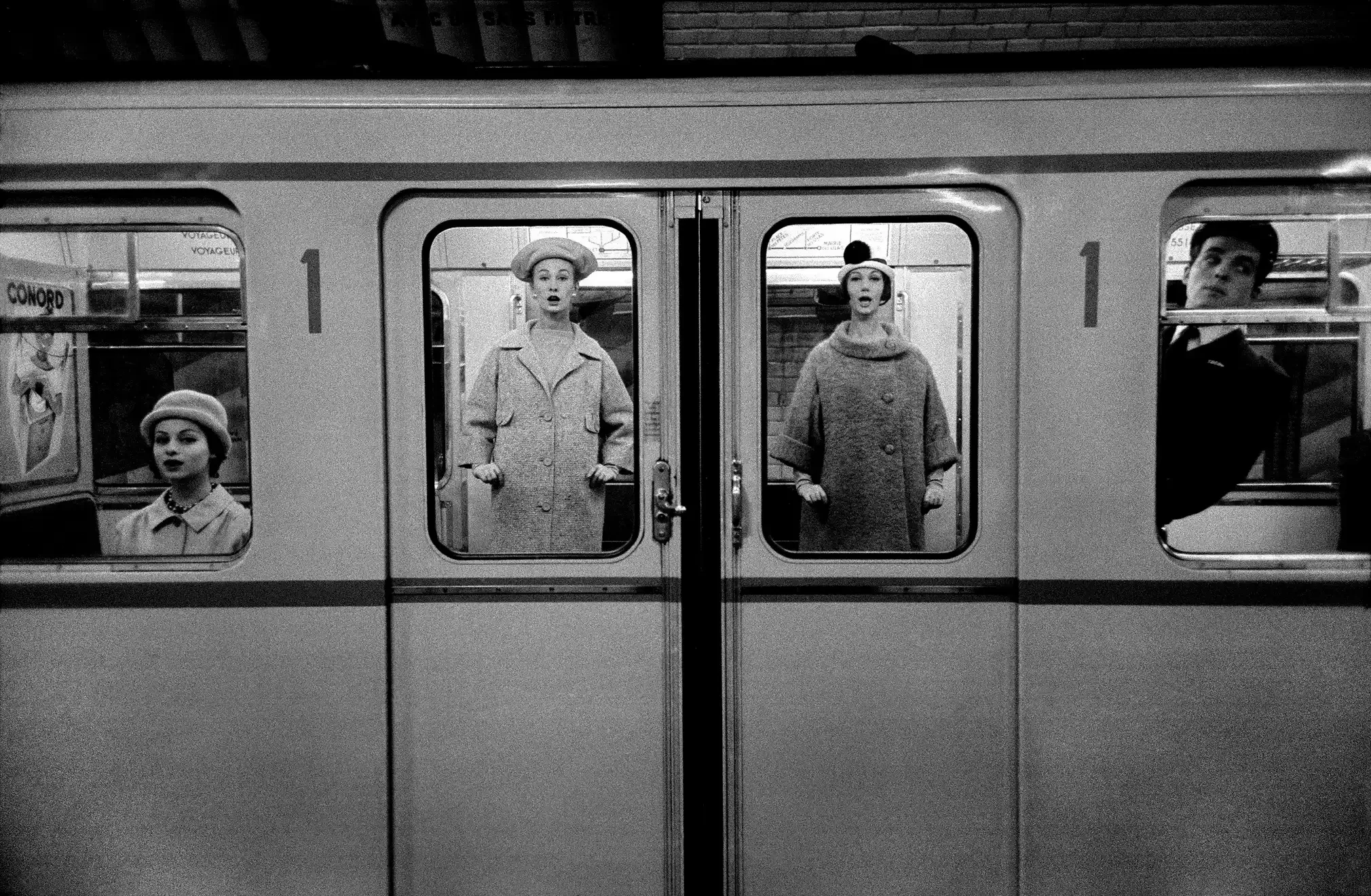1950–1959 The Golden Age of Fashion Photography
The 1950s marked the Golden Age of Fashion Photography, a decade when the art form flourished with new styles, techniques, and legendary photographers who transformed the way fashion was captured and consumed. In the post-war period, New York emerged as the new creative epicenter, rivaling Paris as the capital of fashion imagery. Photographs of the era reflected a renewed love of life: dynamic models in motion, natural light, and expressive spontaneity replaced the more static poses of previous decades.
The decade was defined by pioneering photographers such as Richard Avedon, Irving Penn, Norman Parkinson, Lillian Bassman, and Frank Horvat, each contributing a unique vision that still influences fashion photography today.
Richard Avedon: Orchestrated Spontaneity
Few photographers embodied the spirit of the 1950s like Richard Avedon. Known for his dynamic and elegant style, Avedon revolutionized fashion photography with his concept of the model as both glamorous and real. His so-called “vacation from life” aesthetic conveyed ease, sophistication, and movement.
One of Avedon’s most iconic works, Dovima with Elephants (1955), featuring Dior’s evening dress staged against circus elephants in Paris, epitomizes his talent for creating unforgettable images that were both theatrical and modern. Avedon’s orchestrated spontaneity gave fashion photography an entirely new energy, setting the tone for decades to come.
Dovima with Elephants, evening dress by Dior, Cirque d'Hiver, Paris, August 1955 | Richard Avedon
Shoe Designed by Perugia, Place du Trocadéro, Paris, August 1948 | Richard Avedon
Irving Penn: Refined Elegance and Precision
In contrast, Irving Penn approached fashion with quiet elegance and meticulous refinement. His images combined formal rigor with a sculptural understanding of shape and volume, elevating fashion into high art. Penn was renowned for his ability to transform everyday objects into works of art while also capturing the sophistication of haute couture.
Photographs such as Girl Behind Bottle (1949) and Marlene Dietrich, New York (1948) show his genius for composition, abstraction, and subtle drama. His controlled minimalism represented the impeccable refinement of 1950s style, securing his place as one of the most important fashion photographers of the century.
Girl Behind Bottle, New York, 1949 | Irving Penn
Marlene Dietrich, New York, 1948 | Irving Penn
Norman Parkinson: Joy and Flamboyance
British photographer Norman Parkinson brought energy, humor, and flamboyance to the decade. Though he had begun experimenting with outdoor fashion photography as early as the 1930s, like with this photograph of Pamela Minchin for Harper's Bazaar, the 1950s solidified his reputation for creating vibrant, location-based images. Parkinson’s photographs were dynamic, playful, and full of life—often set in exotic settings with models interacting with their environment.
Unlike the restrained elegance of Penn or the polished drama of Avedon, Parkinson infused his work with a joyful spontaneity that captured the changing spirit of post-war fashion. His images published in British Vogue became some of the most recognizable of the era.
Lillian Bassman: Painterly Moods
Lillian Bassman introduced a more artistic, almost impressionistic approach to 1950s fashion photography. Using innovative darkroom techniques—such as bleaching prints to soften forms—she created images that resembled charcoal drawings. Her background as a fashion illustrator influenced her vision, producing photographs that were less about literal representation and more about evoking mood and atmosphere.
Her portraits of models like Barbara Mullen are timeless examples of how Bassman blended photography and fine art. Though not always fully understood during her time, Bassman’s painterly style is now celebrated as groundbreaking.
Barbara Mullen, New York, circa 1950 | Lillian Bassman
Frank Horvat: Reportage Meets Fashion
French photographer Frank Horvat brought photojournalistic realism into fashion art photography, using a 35mm camera and reportage techniques. This allowed him to capture movement, urban settings, and unexpected moments with an authenticity that contrasted sharply with traditional studio shoots.
His images for leading magazines such as Life, Elle, Vogue, Harper’s Bazaar, Glamour and Jardin des Modes merged realism and artifice, showcasing fashion in bustling city streets, on the metro, or in inventive locations. Works like Givenchy Hat, Paris, 1958 are perfect examples of Horvat’s modern and cinematic vision, which helped shape fashion photography across Europe and the United States.
1958, Paris, France, for Jardin des Modes, Fashion in metro | Frank Horvat
Givenchy Hat, Paris, 1958: for Le Jardin des Modes | Franck Horvat
The Legacy of 1950s Fashion Photography
The 1950s truly were the Golden Age of Fashion Photography, a decade where styles diverged and flourished—from Avedon’s orchestrated spontaneity to Penn’s refined elegance, Parkinson’s flamboyance, Bassman’s painterly moods, and Horvat’s documentary realism. Together, these photographers elevated fashion photography into an art form that combined glamour, sophistication, and innovation.
The images of this era not only defined the look of 1950s fashion but also laid the foundation for the decades of experimentation and boundary-pushing that followed. Their work continues to inspire collectors, historians, and contemporary photographers alike.
Read also:
The 1960s in Fashion Photography: A Revolutionary Decade
Photography in the 1970s: New Movements & Artistics Experimentation
The 1980s in Fashion Photography: From Power Aesthetics to Postmodern Grit
The 1990s: The Golden Age of Fashion Photography & Supermodels
Capturing a New Era: Trends that defined Fashion Photography in the 2000s









